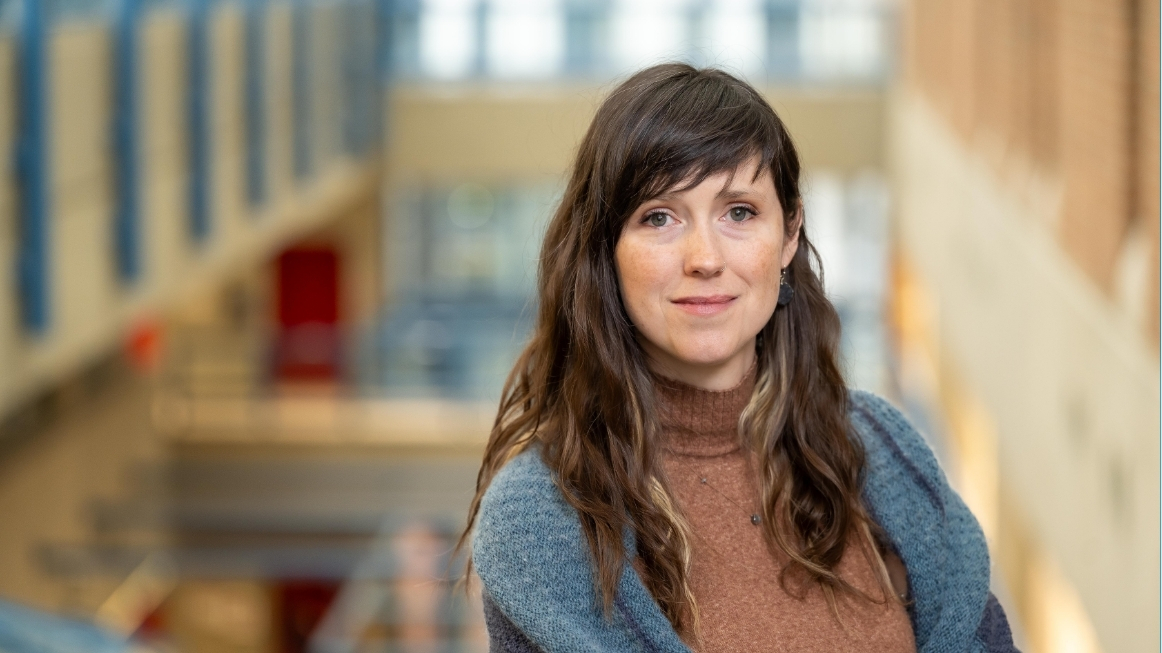

Dr. Kenneth Craig
UBC Psychology Emeritus Professor Kenneth Craig is a world-renowned pain expert whose pioneering work has revolutionized pain research among highly vulnerable populations who cannot verbally communicate for themselves.
On July 1, 2015, Dr. Craig was appointed as an Officer into the Order of Canada. This honour recognizes a distinguished career filled with outstanding achievement, dedication to the community and service to the nation.
In this Q &A, he discusses his groundbreaking research and shares what has contributed to his success as a scientist and a clinical psychologist.
What was your reaction when you first heard about your appointment?
I was delighted. It is a remarkable honour recognizing personal commitment and advocacy, but, more importantly, it acknowledges a body of work dedicated to advancing our understanding and care of pain and suffering in a large number of people for whom care could and should be available. A better understanding of the nature of pain allows better delivery of care.
What led you to treat and research pain?
Traditionally, clinical psychologists focus upon mental health. Graduate work at UBC and Purdue University provided an excellent foundation in this perspective. But in the course of an internship and fellowship in medical psychology at the Oregon Health Sciences Centre in Portland, I became sensitized to the psychological well-being of patients whose primary problems were medical; understanding their thoughts and feelings, as well as their lives as family members and roles in the community were fundamental to understanding their illnesses and powerful determinants of their ability to return to health. What better focus could there be for a health care professional trained in psychological science?
This inspired my initial research efforts at UBC. In addition to my formal education and clinical training, my personal life experiences, the inspiration of students and colleagues, the lessons data have taught me and, perhaps most influential, life with my own children; all have been important. At Purdue, working with a remarkable psychological scientist, Fred Kanfer, I became fascinated with the processes of observational learning, how children and others benefit from observing the successes and failures of others, a process fundamental to the acquisition of virtually all life skills, social, linguistic, motor, you name it. We began looking at how people react when they see others in distress—there is a potent impact on observer psychophysiological reactions and subjective experiences, with dramatic individual differences.
As well, if the person who was observed in distress demonstrated effective coping strategies, observers would react similarly. Pain became a focus because while it traditionally was construed as a primary sensory experience linked to tissue damage, our early studies showed it was remarkably plastic and responsive to the social context. In the early studies looking at empathic reactions to others in pain, we observed dramatic vicarious reactions, with these powerfully influenced by whether the person experiencing pain reacted in a tolerant or intolerant manner. The interest in social learning gave rise to the expectation that children would acquire different styles of reacting when they were in pain or sick as a result of socialization in their unique family and ethnic contexts. But, how to study this? The measurement question was fundamental; how do you measure pain in children? I could describe dozens of studies exploring the use of self-report and physiological reactions, but will settle for the observation that children, like older persons, speak loudly through nonverbal expression, facial activity in particular. That became the key for development of insights into the nature of pain and development of innovative measures useful in clinical settings.
Why are there still challenges with assessing pain?
We understand pain best as a subjective experience comprising thoughts, feelings and sensory components. While private and intensely personal, it typically gives rise to public expression, whether through automatic reflexive reactions and incapacitated behaviour or through purposeful efforts to control the pain, for example, following physician’s instructions or seeking help from others. Reducing these complex subjective and behavioural reactions to a measure useful in delivering treatment is a challenge. Self-report is valuable, as it can reflect the person’s pain, but it also reflects perception of best interests. The difficulties people have in expressing their thoughts, the complexity of the experience, the potential for biased self-representation and scepticism concerning the credibility of self-report all contribute to needing to understand the other sources of inference implied above. Measuring nonverbal behaviour is a challenge we confronted. It became the key to understanding pain in newborns, infants, young children and a host of vulnerable populations who have difficulty communicating painful distress, e.g., children and older people with intellectual and developmental disabilities and cognitive impairments, including elderly people with dementias.
Dr. Craig’s landmark development of nonverbal measures provided the foundation and inspiration for many studies and clinical trials in hospital and clinical settings. He recently co-authored a paper in the journal Pediatrics with University of California, San Diego colleagues in computer science and paediatrics. In this study, the researchers developed and tested techniques using computer vision, which allowed them to automatically assess pain in a clinical setting.
What was your role in this study?
I brought a long history of detailed study of how children behave when in pain, everything from the reactions of newborns to the commonplace, inevitable blood sampling invasive procedures through immunization injections to post-operative distress and the pain that accompanies the unfortunately very common pain syndromes of childhood such as headaches, abdominal pain and joint pain. My colleagues have great expertise in computer vision, pattern recognition and machine learning, psychophysiology and in caring for children in hospital settings. Our multidisciplinary collaboration is a remarkably gratifying enterprise.
How can technology help with pain assessment and measurement?
We know that as a powerful primal experience pain provokes relatively stereotyped physiological and behavioural reactions. The ancestors of humans reacted vigorously to painful insult—survival depends on this. Humans are cagier—they are able to think and use problem solving strategies to cope with pain and the injuries and diseases that provoke it. Technology offers the promise of capturing these reactions without having to question the individual or to use human resources to collect the data. Let me illustrate with the study mentioned above—we had cameras record the behaviour of children during recovery from appendectomies, a surgical procedure known to be very painful. The computer technology was able to capture the spontaneous pain arising from the surgery even when nurses and parents were not available to monitor the children. I liken this to the use of automatic recording systems that send information on vital signs, temperature, heart rate, etc., to nursing stations, allowing them to intervene when the technology informs them the child is in need. We are exploring this potential.
Dr. Craig has had a long and distinguished career at UBC. He completed a master’s degree in psychology at UBC in 1960 and returned as a UBC faculty member in 1963. He has served as Associate Dean of Graduate Studies, Distinguished Scholar in the Peter Wall Institute for Advanced Studies and Director of the Graduate Program in Clinical Psychology.
Why did you choose UBC?
Now there’s an easy question. UBC is a wonderful educational and research institution. It provides an abundance of opportunity to work with brilliant and congenial students and colleagues. And it is situated in Vancouver, British Columbia, Canada. How blessed we are to live with family, friends and colleagues in this environment. I have visited and spent productive and pleasant times at other excellent institutions, the University of Calgary, in my home town, Oxford University and Ghent University, as examples, but have always been happy to return to Vancouver. I could quibble about some times meagre resources and underfunding of a world class educational and research intensive university, but the Psychology Department and the University in general have delivered the resources that have allowed me to flourish.
A former UBC Thunderbird, Craig was a member of the Western Champion UBC team that played in the first National University Football Championship. He’s an active skier and runs daily.
How has your lifelong physical activity helped you in your professional life?
Well, for a couple of decades, the running was daily but now it is most days. Jericho Park, Locarno Beach, Pacific Spirit Park are my running tracks. I’ve long believed in the importance of mind, spirit and body—my undergraduate days were at Sir George Williams College in Montreal on a YMCA Fellowship. The running just feels good, but it also gives the stamina and health to support an active life style.
What else has contributed to your success?
The research interests described above hint at what I think is important. In many ways each of us is the product of the environments to which we have been exposed. My family in Calgary will always be there. My wonderful family in Vancouver, Sydney (Dr. Sydney Craig, recently retired as the Director of Teacher Education in the Faculty of Education) and our children, Jamie, Alexandra and Kenneth, is the centre of the universe and we treasure our friends. UBC, and I think mostly of the people, but also the bricks and mortar and the labs and connections with superb health care professionals and scientists in clinical settings, provided superb infrastructure.
I cannot say enough about the wonderful graduate students, postdoctoral fellows and undergraduates with whom I have been privileged to work. I am prone to saying, not entirely facetiously; all my good ideas were theirs. There are too many to name. The same applies to colleagues in Vancouver and across Canada, as well as my international collaborations in the United States and Europe. Maybe I could just mention my co-principal investigators on a currently CIHR funded Strategic Training Program on Pain in Child Health responsible for a burst of training and Canadian pre-eminence in this important field, Christine Chambers, Allen Finley, Ruth Grunau, Celeste Johnston, Patrick McGrath, Rebecca Pillai Riddell, Bonnie Stevens, Jennifer Stinson and Carl von Baeyer, all superb scientists and health care practitioners. But that doesn’t name other colleagues essential to my career, such as Ken Prkachin, Thomas and Heather Hadjistavropoulos, Tim Oberlander and many others. This also fails to mention golden opportunities to work with colleagues in professional and scientific organizations dedicated to community and professional development in Canadian society.
Related
- UBC Psychology Professor Emeritus Dr. Kenneth Craig appointed into the Order of Canada
- Staring Pain in the Face: Software “Reads” Kids’ Expressions to Measure Pain Levels
About Dr. Kenneth Craig
Kenneth Craig is a Clinical Psychologist and Emeritus Professor in the Department of Psychology at UBC. He is Editor-in-Chief of Pain Research & Management, the journal of the Canadian Pain Society. He recently completed a term as Chair of the UBC Behavioural Research Ethics Board. Honours have included status as a CIHR Senior Investigator, the Canada Council I.W. Killam Research Fellowship, the Canadian Pain Society Distinguished Career Award, the Canadian Psychological Association Donald O. Hebb Award for Distinguished Contributions to Psychology as a Science, appointment as an Honorary Member of the International Association for the Study of Pain and the Distinguished Career Award of its Special Interest Group on Pain in Childhood, and the American Pain Society Jeffrey Lawson Award for Advocacy in Children’s Pain Relief. He has served as President of the Canadian Pain Society and the Canadian Psychological Association. He presently is President of the College and University Retiree Associations of Canada. In July 2015, he became an Officer of the Order of Canada.
-Bonnie Vockeroth


